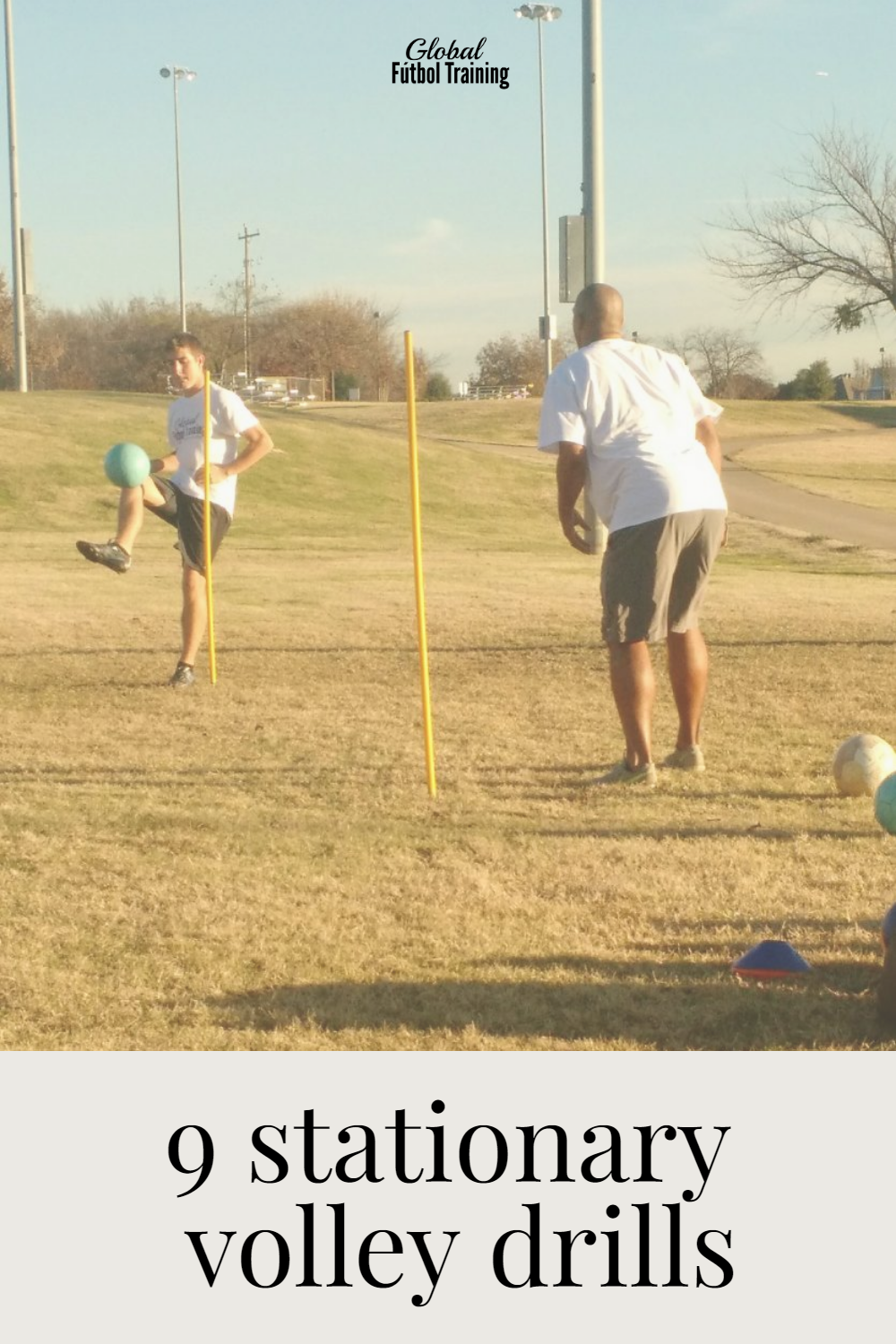The two most common volley drills are laces/top of foot and inside. These are typically used to improve your pass. You can use a partner or wall. This blog article is filled with 9 different volley drills for ages 10+. Ages 7-9 can be introduced to 1 touch laces and inside, but most of these are advanced drills. Some people ask how volleys help. Passing short, long and shooting is the answer. You’ll see a few of these drills with the older higher levels, but younger players need to be introduced to these skills.
Inside of the foot volley drills
With the inside of the foot you want your toes to be pointed up. In the video above you’ll notice we do 4 ways using the inside. #1 Regular toss where the ball comes to the player. #2 The toss out wide where the player needs to move and/or reach for the ball.
The third and fourth volley drills are bouncing. #3 Full volley using the inside of the foot, connecting the ball at the higher point. #4 The half volley is more challenging, so be patient. Players who learn and become good at these volley drills will be more prepared in game settings.

Top of the foot [laces] volley drills
There are 3 more volley drills (#5, #6 and #7) I give for the player to use the top of the foot.
In the video above you can see me toss 4 regular in front of her, then I toss 8 more getting a little wider on each toss. The wider and higher the ball is tosses, the more challenging. It’s not that we do things just to be challenging, but more for being good at everything.

Outside of the laces for longer reach
Along with volleying the ball out wide with top of the laces, outside of laces will be the most difficult. The way the foot is angled is very different.
There are 2 different techniques with these last two volley drills (#8 and #9) using the outside of the laces. Bounce and no bounce. I teach the no bounce first. With a good toss the player can get in the rhythm/zone.
The bounce will make it where the player has to adjust more. If the ball bounces big the player will have to react and adjust their body and foot. The toes might need to come up to redirect the ball. If the ball doesn’t bounce high then the player can keep their toes pointed down.
Most club/select players and even college players never learn these volley drills, but they should. Read more on how to control bouncing balls in soccer.
Where to connect on the ball
To shoot or pass the ball low you want to connect on the equator [middle] or an inch above it. To make the ball go high you want to do the opposite and connect just under the equator of the ball. The timing is one of the hardest parts to learn. Most players think they need to connect/kick the ball when it’s higher, say around the knee. It all depends on if you are shooting or clearing the ball.
When shooting a volley you typically want to let the ball get lower than the knee. This way when you volley/kick the ball you connect near the middle [equator] which helps keep the ball low.
When clearing a ball out of your own defensive end, you usually want to get under the ball. This helps you get the ball to go high and far, which is what you want when clearing the ball.

Parts of the foot to use
When using the laces you want to try and connect down the very middle. This way if you are off and it connects at the bottom of the laces or the top, it will be good. Most players never think about exactly where and most coaches never teach it.
When I ask players where on the laces, they rub all the laces. Then I ask them to show me the exact finger point spot. 80% say the very bottom lace. This isn’t a bad spot to connect, but you don’t want to try and go here because if you’re off by 1 inch it will get you on top of the toes. This is an air pocket and also toes are not as strong as the top of the foot, higher up the laces.
When using the inside of the foot, there’s a sweet spot the size of a dime. It’s part of the bone that feels like the edge of a marble. It’s located near the highest shoelace hole. Everything under this spot will end up connecting on the muscle of your foot or under your foot. This is one of the most important things when passing with the inside of your foot.
Learn more about me [Jeremie] in this mini doc video


